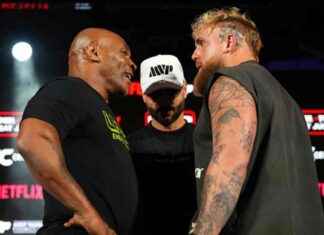Arthur Biyarslanov sizes up the speed bag, fists high, chin tucked, right foot forward in a southpaw fighting stance. He slides to his right and smashes the bag with an overhand left.
He does it again as his new coach, Almaz Dosmatov, offers instruction in Russian. Then the 2016 Olympian steps left and whacks the speed bag with a wide, downward arcing right hook.
The pair train daily at Grant’s MMA-Rival Boxing Gym in North York, where Biyarslanov moved his training base after returning from the Olympics. Biyarslanov entered Rio as Canada’s best podium hope, but left without a medal. He elected not to turn pro, betting instead that Dosmatov can fine-tune his craft ahead of another year of international competition. This weekend Biyarslanov competes at a tournament in Brampton.
But the 21-year-old light-welterweight may soon have to choose between his home gym and the national team. Boxing Canada is setting up a training centre in Montreal and expects all national team members to relocate there before the end of the year.
The setup presents a dilemma for Biyarslanov, who wants to keep competing for Canada but doesn’t want to leave his new coach.
“You learn a lot when you train harder and more technically,” Biyarslanov says. “I already feel that I hit harder. I feel more confident.”
For Boxing Canada, the decision to centralize was simple. No Canadian fighter has won an Olympic medal since 1996. Meanwhile, every team that won four or more boxing medals in Rio has a full-time national team training base.
Boxing Canada high-performance director Daniel Trepanier says a post-Olympic review of the organization determined that returning to the podium would require hiring world-class expertise and housing all top fighters in one place.
A less-formal version of that system existed in the 1980s, when Boxing Canada successfully recruited Romanian coach Adrian Teodorescu, who oversaw national team fighters in his Etobicoke gym. Trepanier says the loose network of local gyms where Canada’s Olympians currently train can’t compete with other nations’ high-tech centres.
“Access to sport science will create a completely different dynamic,” he says. “We want to create a performance-oriented environment . . . What we want to offer them is the best boxing program in the world. They won’t find that in their (local) gym.”
Biyarslanov — nicknamed the Chechen Wolf — trained under Trepanier in the weeks leading up to Rio and says he had better access to high-level sparring and therapy than he would at a local gym. But he says he bonded quickly with Dosmatov on his return to Toronto. Both are devout Muslims who speak Russian — Biyarslanov spent his childhood in Chechnya, while Dosmatov grew up in Kyrgyzstan.
The pair say their relationship has added another dimension to Biyarslanov’s boxing. Few coaches here teach the downward-arcing hook Dosmatov showed his fighter, but middleweight champ and Kazakhstan native Gennady Golovkin used it to flatten challenger Marco Antonio Rubio.
“No one else is doing this in North America,” says Dosmatov, who left Kyrgyzstan 11 years ago. “But I don’t like advertising myself. I like to work.”
It’s not clear when Biyarslanov will get to test his new skills in competition. He was scheduled to fight in a mid-February tournament in the Dominican Republic, but the event has been cancelled.
In the meantime, both he and Boxing Canada are headed to a crossroads.
Biyarslanov remains Canada’s best 141-pound boxer by a wide margin, yet Boxing Canada recognizes he isn’t likely to stay amateur for another whole Olympic cycle.
But the fighter says he’ll improve more facing top amateurs than he would against the journeymen and part-time fighters populating the lower ranks of the pro circuit. Growing as a boxer means sticking with the national team.
“I’m in no rush to turn pro,” he says. “By the time I get older I’ll be more mature, and I’ll be at my peak strength.”
The Toronto Star and thestar.com, each property of Toronto Star Newspapers Limited, One Yonge Street, 4th Floor, Toronto, ON, M5E 1E6. You can unsubscribe at any time. Please contact us or see our privacy policy for more information.
Our editors found this article on this site using Google and regenerated it for our readers.





